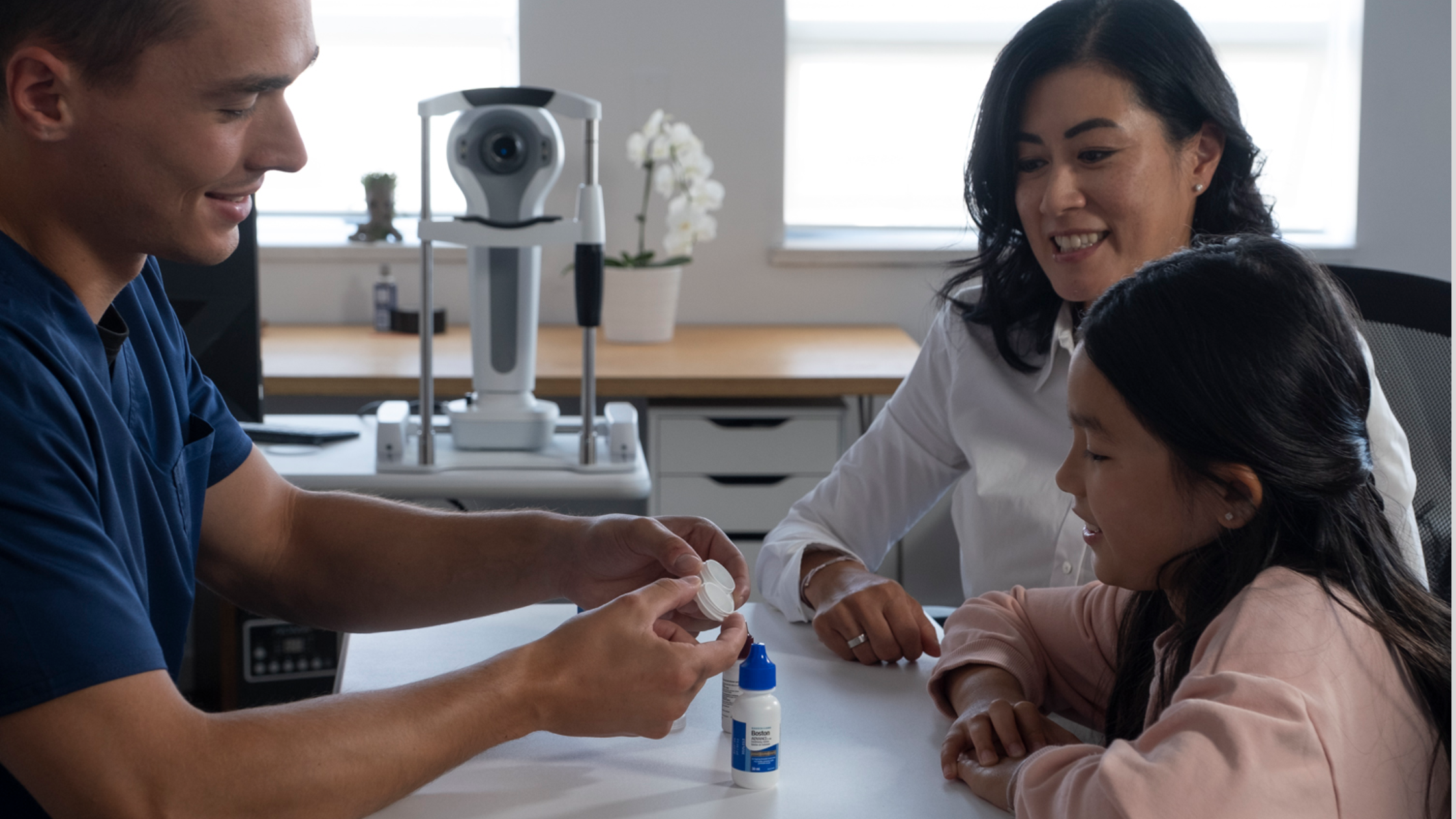
Guide parents of children using Ortho-K
If your CL patient is a child, engage parents to play an active role in their children’s eye health. Equip them with actionable advice, from lens insertion techniques to aftercare routines.
Reassure them that their involvement is instrumental in ensuring success. But it’s not the only factor. Together, you must also assess a child’s level of maturity, personal hygiene and motivation to wear contact lenses.
Engage patients long-term
We can’t overstress the importance of ongoing CL patient education and communication in this area. Studies have found that in medical care in general, up to 50% of patients don’t follow the advice and instructions of their care providers (6). That’s no surprise when you learn that patients may forget 40-80% of medical education after leaving a medical visit (7), and half of the information retained is incorrect.
The takeaway? Work with your staff and communications technology to engage patients over time. Consider e-newsletters, reminder texts or social media updates to keep them informed and motivated
It’s also worth noting that the first few months of contact lens wear are most important.
One study revealed that 26% of new CL wearers had dropped out 12 months from initial lens fit, 25% within the first month and 47% within 2 months (8). So, ramp up your communications, monitoring and follow-ups during this key timeframe.
It pays to educate
Studies estimate that a single CL wearer who drops out could cost you up to $21,695 USD in lost revenue over their lifetime (9). That’s a big chunk of your bottom line—another incentive to make contact lens health education an integral part of your workflow from the get-go.
You hold the power to shape your patients’ eye health
By mastering effective communication, you empower your CL patients to prioritise their eye health. Through empathy, education, and ongoing engagement, you’ll establish a foundation of trust, commitment and compliance, leading to healthier eyes and happier patients.
References:
1,2,9) Pucker AD, Tichenor AA. A Review of Contact Lens Dropout. Clin Optom (Auckl). 2020 Jun 25;12:85-94. doi: 10.2147/OPTO.S198637. PMID: 32612404; PMCID: PMC7323801.
3) Cope JR, Konne NM, Jacobs DS, Dhaliwal DK, Rhee MK, Yin J, Steinemann TL. Corneal Infections Associated with Sleeping in Contact Lenses – Six Cases, United States, 2016-2018. MMWR Morb Mortal Wkly Rep. 2018 Aug 17;67(32):877-881. doi: 10.15585/mmwr.mm6732a2. PMID: 30114003; PMCID: PMC6095652.
4,5) de Oliveira PR, Temporini-Nastari ER, Ruiz Alves M, Kara-José N. Self-evaluation of contact lens wearing and care by college students and health care workers. Eye Contact Lens. 2003;29(3):164–167.
6) World Health Organisation 2003, Adherence to Long Term Therapies: Evidence, For Action: pp22
7) Kessels RP. Patients’ memory for medical information. J R Soc Med. 2003 May;96 (5):219-22. doi: 10.1177/014107680309600504. PMID: 12724430; PMCID: PMC539473.
8) Sulley A, Young G, Hunt C. Factors in the success of new contact lens wearers. Cont Lens Anterior Eye. 2017 Feb;40:15-24.
